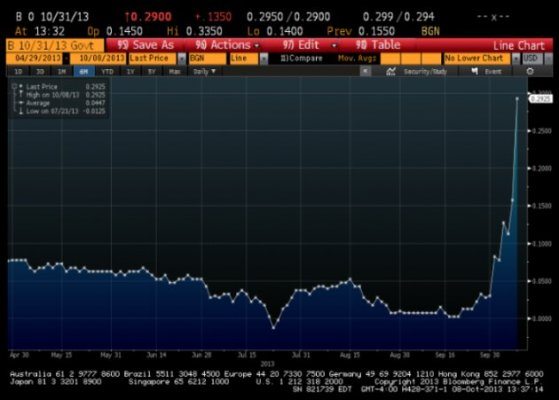A lot of the market indicators of how much the financial world is worrying about a debt default have been quite calm over the last week. The Standard & Poor’s 500 index, for example, is only about 1 percent below its close eight days ago, when the government shutdown began.
But in the less widely followed — but in many ways more important — market for Treasury bills, things are starting to get scary. These are short-term IOU’s of the U.S. government, bills issued for 30, 60 or 90 days. They enable Uncle Sam to manage cash flow much the way a homeowner might use a credit card. They also form the backbone of trillions of dollars in transactions: Major corporations and banks use them as a place to park short-term cash; they are held by money market mutual funds; and they serve as collateral for millions of transactions in markets around the world.
Normally, the interest rate the government pays on bills is around the same as the short-term interest rates in other money markets (for example, the interest rates banks charge each other for overnight cash, or the interest rate that the Federal Reserve targets). Both of those are near zero right now, which is why on Sept. 30, eight days ago, the interest rate on Treasury bills maturing Oct. 17 was a mere 0.03 percent. Nothing, in other words.
But since then, the possibility that the Treasury might have trouble paying or might not be able to pay its bills over the next few weeks has grown — and the interest rate has skyrocketed. It was at 0.16 percent at Monday’s close. On Tuesday the rate so far has been almost double that, as high as 0.297 percent.
There are reports, including this one from Reuters, indicating that some of the biggest money managers in the world are starting to avoid U.S. government debt that matures in the near future out of fear they will not be repaid promptly.








